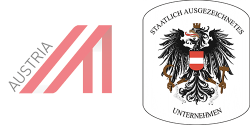Leider etwas teuer für eine Privatperson. Die verrechneten Kosten waren schlußendlich doppelt so hoch wie im Kostenvoranschlag.

D-Link NAS Recovery
Attingo recovers data from D-Link NAS systems on a regular basis. In over 98 % of cases it is possible for us to successfully restore the data. The data rescue is solely performed in our in-house clean room laboratories by experienced specialists. Common data loss causes are firmware bugs or malfunction of one or more hard drives, dependent on the RAID level.
We help recover Data of the following models:
- ShareCenter Shadow
- ShareCenter Quattro II
- ShareCenter Pulse
- SAN Storage
- SoHo Cloud ShareCenter
- ShareCenter Cloud
Attingo - Your specialist for D-Link NAS data recovery
The success of a data recovery depends on a variety of factors. NAS systems differ in file system (mostly linux-based: ext 2, ext3, ext4), the amount of integrated storage media, as well as the RAID Level (RAID 0, RAID 1, RAID 5, RAID 6). It is important to keep calm. The less recovery tries were made on your own after data loss, the higher are the chances for a successful recovery. Our technicians have developed procedures in order to virtually simulate RAID-systems and recover data of Linux based NAS systems.
Good news: In more than 98 % of all cases, Attingo can recover the data of failed NAS systems.
D-Link NAS Recovery - We help you after data loss
- We provide multiple diagnosis options depending on the urgency of your data rescue case
- After the diagnosis is completed you receive a fixed price offer
- No hidden costs - Expenses are only incurred if the D-Link NAS data rescue is successful
- The recovery of your D-Link NAS will be done by experienced and specially trained engineers
- Fast reaction times - in urgent cases, we offer a 24x7 service
- In-house research and development for fast virtual simulations of your D-Link NAS Array
- Profound knowledge about internal system structures, algorithms and behaviour of D-Link NAS controllers
- Special recovery-tools and individually developed equipment to read-out and recover storage data
- More than 14.500 spare parts in Vienna, Hamburg and Amsterdam
Contact us - order your diagnosis today.
Reasons for NAS hard drive failures
There is a variety of reasons for failed hard drives in D-Link NAS systems:
Wear and tear of the hard drive
Generally speaking, NAS systems operate non-stop, even though the contained hard drives are often not optimized for long term usage. Frequent write- and read-operations can cause normal wear and tear to occur much sooner than expected and lead to a failure of one or more hard drives. Wear and tear is one of the most common reasons for failure or defects of physical or electronic hard drives components.
Incorrect handling
Sometimes D-Link NAS can already suffer damages on their route of transport caused by incorrect handling or physical influences (drop, shock, heavy vibrations). These can negatively influence the life span of the integrated hard drives and can lead to mechanical defects (write-/read-heads, surface damages).
Electronic damages caused by over-voltage
If a D-Link NAS is non-stop operating, this also means that it needs a continuous power supply. In case of a storm or lightning, over-voltage based damages on the NAS itself or the hard drives can occur. Another scenario are wrong or defective power supplies, that can cause over-voltage.
Thermal factors
D-Link NAS can overheat very quickly, if not properly cooled. Hard drives are very prone to damages caused by temperature fluctuations (material expansion, change of the height of the air cushion). This can result in grave mechanical defects.
Other causes for data loss of D-Link NAS
Lost data after a firmware update
D-Link provides the latest firmware updates for their NAS servers. The administrator gets notified via the web interface that a new firmware version for his D-Link NAS is available. In some cases, the firmware update can lead to a loss of data.
Deleted RAID configuration of the D-Link NAS
When configuring a new RAID set-up (e. g. RAID 0 to RAID 1), the previous configuration of the NAS will be deleted, the hard drives formatted and a new volume and file system created. Thereby all shares or files will be deleted. Additionally, if new data is being saved onto the NAS, the previous raw data gets gradually overwritten.
Damage limitation with D-Link NAS systems
- No restarts, rebuilds or chkdsk! That may have fatal consequences.
- Avoid new installations and don't save new data on the NAS.
- Remove the hard drives from the D-Link NAS and label them with their correct slot position.
- Tell us the exact model name of your NAS, the capacity of the hard drives and the NAS system configuration.
ShareCenter Shadow
DNS-325-1TB
DNS-325-2TB
DNS-325-2TBR
DNS-325-4TBR
DNS-327L
ShareCenter Quattro II
DNS-340L
DNS-345-4TBR
DNS-345-8TBR
ShareCenter Pulse
DNS-320L
DNS-320-1TB
DNS-320-2TB
DNS-320-4TB
DNS-320-2TBR
iSCSI SAN
DSN-1100-10
DSN-2100-10
DSN-3200-10
SAN Storage
DSN-6020
DSN-6110
DSN-6120
DSN-6410
DSN-6420
DSN-3400-10





































